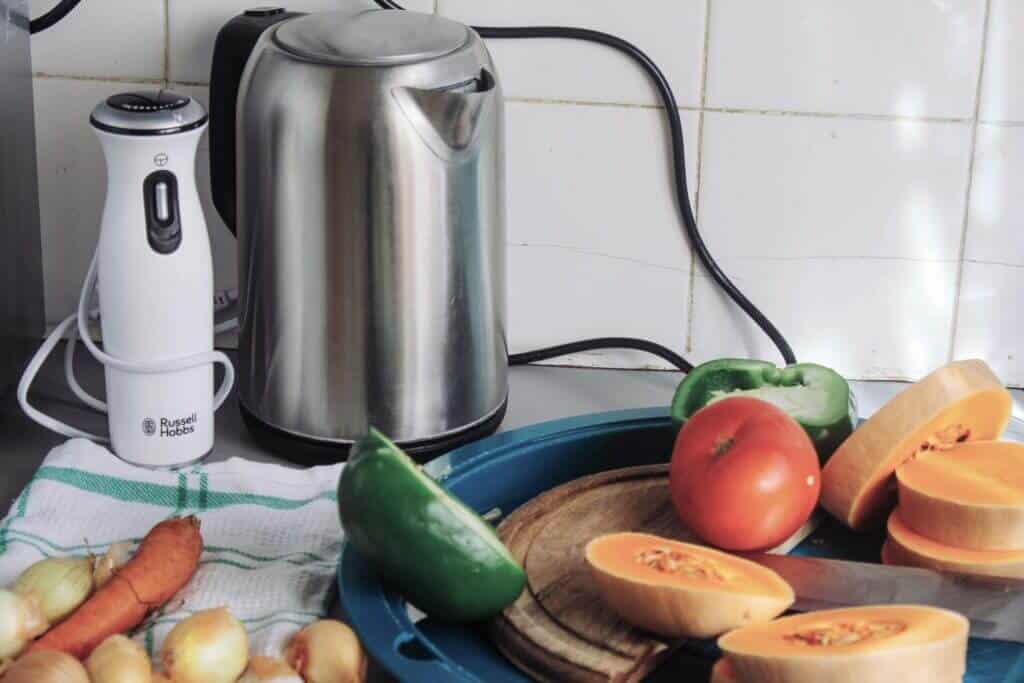Let’s face it. It’s pretty difficult to maintain small electric kettles for longevity use, isn’t it? I have damaged a couple of electric kettles before. But the last one I bought is serving me long.
Well, did I do that reading boring kettle instructions carefully? Or by buying an expensive one? None of them is fully true.
Most kettle instructions were boring and focussed more on covering the manufacturer against being sued. The important information is buried deep inside the manual no one has that time or patience to go through to figure it out. Buying an expensive kettle wouldn’t save you either.
I found these ways to maintain small electric kettles for a longevity use with a lot of research and mistakes with my past few damaged kettles.
I’m going to break it down into 7 simple tricks that are easy to follow and can help you to maintain your small electric kettle for longevity use.
6 tricks to maintain small electric kettles for longevity use
Consider these 6 simple tricks to maintain small electric kettles for longevity use. I personally use these and started getting benefits:
- Wash your small electric kettle instantly after using
- Use a Dedicated Socket and avoid using normal power extensions
- Don’t Turn On Empty Kettle
- Use the Right Amount of Water
- Never try to store water in your kettle
- Always unplug it before using water
I’m going to share the exact details process of all these tricks so you can understand exactly how to practically implement them.
1. Wash your electric kettle instantly after using
The most important trick to maintain your small electric kettles for longevity use is to clean your electric kettle every time after using it. I know you have to put in extra work every time but trust me this is necessary. If it’s a new kettle, washing is mandatory before use.
The outer surface can collect dust over time, as the manufacturers coat them with chemicals to prevent them from rusting. Take out the plug from the attachment and clean the external surface of the electric pot with a clean cloth. To get rid of collected chemicals and dust, clean the kettle thoroughly with dishwashing soap or liquid.
The inner surface is a bit difficult to clean. Let the kettle cool down. Start by filling your kettle 1/2 to 3/4 full with equivalent amounts of water and white vinegar. Heat the kettle to the point of boiling, turn it off (if it doesn’t turn off automatically) and permit the water and vinegar blend to sit in the kettle for 15 to 20 minutes. Dispose of the water and vinegar after use. Remove this mixture from the kettle and then clean it up.
Then fill it with warm water and wait for a couple of minutes. Remove the water and then again do the same task. Make sure to remove the dirt from every corner of the kettle properly. Use a dry cloth for drying it up quickly.
See the process in action in the video below.
2. Use a Dedicated Socket and avoid using normal power extensions
Modern kettles are surprisingly power-hungry – 1kilowatt, sometimes 1.5 kilowatts. These often require a well-wired connection for requisite power handling capability.
It’s better to use a dedicated or well-wired power socket if you want to maintain your small electric kettles for longevity use. I don’t recommend power extensions.

However, If you still want to use extensions consider using a powerful one. Otherwise, it can end up burning or damaging both your extension and kettle. Look for power strips with Surge protection: 1,080-3,400 joules and Circuit breaker: 13-15-amp.
3. Don’t Turn On Empty Kettle
Although it depends on the design, but from my experience I recommend never turn on an empty kettle.
The heating elements will create irreparable damage and decrease its lifespan. Some advanced electric kettles, for example, the ones from KENT, naturally removes the force if there is no water.
Don’t take a risk. Turing on an empty kettle can cause serious accidents. Also always unplug the kettle before pouring water.
4. Use the Right Amount of Water
Never overfill the kettle. This another necessary thing to maintain small electric kettles for longevity use. I recommend you boil the right quantity of water, every time. Overloading water can make the water spill over which can ruin the electric piece of the kettle and even burn your hands.

Put just the water in the kettle that you need. don’t fill it up every time if you’re only making a cup of tea or two. It’s not just quicker, but it uses a lot less power. You shouldn’t use too little amount (Less than one cup) of water either.
And If sometimes you need to fill it then check the highest water level and don’t fill above that. Most of the electric kettles have the measurement marks on them.
This brings us to number 5.
5. Never try to store water in your kettle
This another common mistake that even I made. Storing water in your kettle every time can build-up limescale or mineral deposits, which damages the appliance.
Ensure you spill out all the water from the appliance when you don’t need to use it. It’s better to rinsing and drying the kettle thoroughly each time to avoid any hard water from drying.
You also can use a water softener to completely prevent limescale build-up.

This solution eliminates the magnesium and calcium present in the water supply, transforming it into softened water. This decreases the chance of build-up in kettles since soft water doesn’t cause limescale. But it’s not mandatory.
6. Always unplug it before using water
Most users pour water instantly after boiling without even unplug it.
Now, all-electric kettles have an automatic shut-off that stops heating the water when they reach boiling point. it’s easy to forget to unplug it.
Doing it every time can cause electrical damage. Make sure you unplug the kettle before pouring.
If you need to boil water again don’t use it immediately. Wait approximately 10 minutes for the kettle to cool down, then lift and refill as normal.
Few More Instructions
Following these safety and maintenance tips will help you maintain small electric kettles for longevity use without any glitch:
- Do not wash the power cable.
- Before you plug in the kettle, ensure that the base is dry.
- Check whether the plug is working and whether you have the correct pinhole to plug it in.
- Place the kettle correctly on the power base.
- Descale it at least once a month, if you boil hard water.
Hope these tricks and instructions will help you to maintain your electric kettle for longevity use. If you find this article helpful leave a short comment below.
Read Next: How to fix a sink faucet diverte valve

